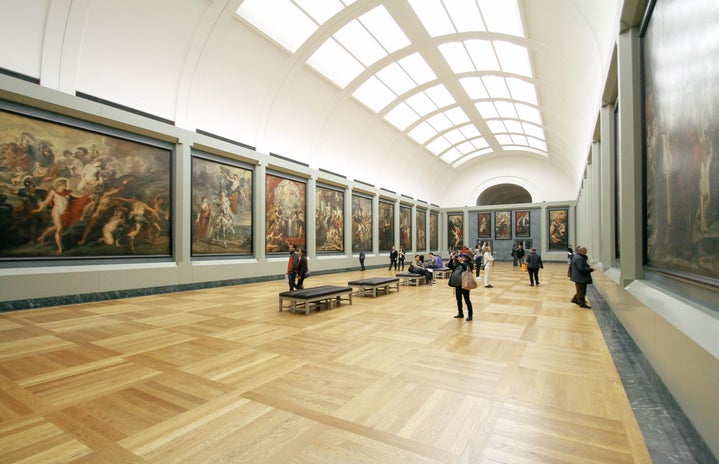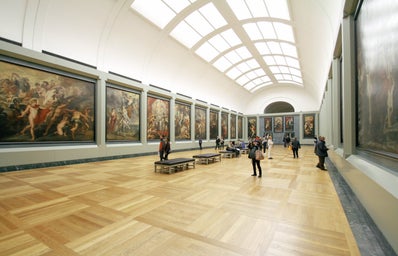With its special connection to Mary Lyon, the founder of Mount Holyoke College, the Hadley Chest assumes its rightful place in the Mount Holyoke College Art Museum. According to Baltimore Sun, the chest derives its name from Hartford author and antiquarian, Henry Wood Erving. In 1883, Erving discovered a chest “in an old Hadley homestead” in Hadley, Massachusetts, and gave it the name “Hadley chest”. Thus the name Hadley Chest has been used to describe chests similar to the one in the museum. It was gifted to the College by Herbert Boyden Newton in 1923 for the original Mary Lyon collection. It currently sits in the Renee Cary Gallery in all its faded glory.
The presumed makers of the chest are Samuel Belding Jr. and Ichabod Allis. Allis married into the Belding family, who had a legacy in carpentry and joinery in Hartfield. He later became a partner with Samuel Belding Jr., a joiner.
Though most of its once vibrant colors of red and black have faded away, the Hadley Chest is pretty hard to miss with its bulky size and distinct carvings splattered on the front side. The letters “E.K.” are emboldened in the center of the chest, signifying it was custom-made for Editha Kellogg, the great-great-grandmother of Mary Lyon. Its size accounts for its primary use of storage. The chest was a symbol of coming-of-age for young women who had finally moved from childhood to adolescence. Wealthy families gifted it to young women as a piece of their dowry to prepare them for married life by storing away the vital items they would need. Such items would include towels, napkins, blankets, linen sheets, and any wedding gifts. Made with oak, pine, and iron, the chest was suited for keeping textile material dry and safe from insects that could ruin the material. These stored items would help them be better household managers, aligning with the idea of women being relegated to household chores and childbirth in the 1700s.
The carvings take on different shapes with a consistent floral theme: tulips, trees, leaves, and spiral vines. The flower patterns could symbolize many things. A flower represents one of the steps of the reproductive cycle of plants. Maybe it’s sending good fortune to the future bride regarding her fruitfulness in marriage. The red pigments could represent red tulips which stand for perfect love, probably wishing a happy and successful marriage to the young woman. The former is probably more likely as women were mainly seen as child-bearing objects.
The Hadley Chest was designed to appear mirrored on both sides. However, a trained eye could spot the slight errors in its carvings. Towards the center where the initials are carved, a small “E” is carved; the carpenter probably changed his mind to make it larger and painted over the error. Also, several floral patterns are not correctly repeated on the left side of the chest. On the top lid of Editha’s chest, there are two handprint indents showing the hands that had opened the chest throughout the years. Leaving a permanent legacy for its owner, who is now dead, the chest lives on as people walk into the museum to get a glimpse of her life. The indents also evidence the fact that the chest has not been repainted by the college and its materials have actually withstood the test of time.
It’s amazing how popular opinion can evolve over the years. These chests would have been criticized as a way of treating women as objects who are meant to aspire to marry. Though this practice might sound outdated in the present time, women actually welcomed the ownership of Hadley chests because it was the one item that was truly theirs, with their initials clearly engraved, in the dire patriarchal society of the 17th/18th century. This practice of giving a Hadley Chest was quite widespread in parts of Europe and the Middle East. In the US, it was called a “hope chest.” Unmarried women in Australia called it a “glory box.” The names are associated with positive words, furthering the idea that the practice of preparing oneself for marriage was associated with joy. The practice is outdated and society is becoming less biased towards the expectations of women for marriage, but the Hadley Chest is a reminder of how young women back in the the1700s had something to call their own.
If you would like to write for Her Campus Mount Holyoke, or if you have any questions or comments for us, please email hc.mtholyoke@hercampus.com.


